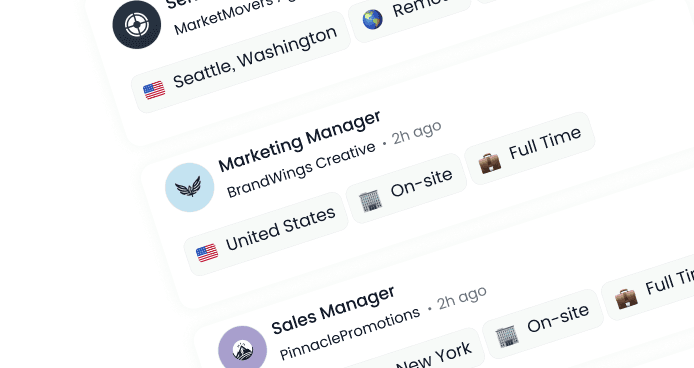Hiring at Scale? Filter Faster While Keeping Top Talent in Sight
Published:
September 7, 2025
All
Recruiting Tips
AI Recruitment
Employer Branding
Video Interviews
Hiring at scale is tough — the right practices help you filter fast without losing top talent.
Introduction
Have you ever faced hundreds of applications for one open role and worried about missing top talent? If you have, then worry not, we’ll look at this and mention ways that can help you with your hiring at scale requirements. We will also look at how you can overcome the challenges associated with using AI-based tech to help your bulk recruiting requirements.
For example, according to Business Insider, Chipotle’s AI chatbot improved candidate completion rates from 50% to 85%, but it also caused confusion when interviews were scheduled at non-existent locations.
This shows both the promise and the pitfalls of AI-based high-volume recruiting. For growing companies, managing bulk applications quickly without losing quality candidates is now one of the biggest hiring challenges. We suggest you read this until the end, as we discuss these issues in depth and offer insights that can help you with your hiring.

The Problem with High-Volume Hiring
Managers who do the hiring are usually processing hundreds of resumes per vacancy. Manual reviews are not only time-consuming, but they are liable to error. Recruiter fatigue is real and as it reaches its limits over time, the chance of strong candidates getting missed increases. By making speed the sole priority, companies will end up hiring the wrong people, which will result in a loss of money and a loss in performance levels.
Recruiters know that the current system isn’t sustainable. The real challenge is finding ways to scale hiring without sacrificing the quality of the talent pipeline. The stakes are high: bad hires can cost up to 30% of the employee’s first-year earnings, while high turnover erodes morale and productivity.
The other challenge is the employer branding. Professionals now demand clear, equitable, and effective hiring practices. The unaffluent process that is full of delays and is accompanied by uneven communication not only has the potential of losing one of the best employees, but also has bad effects on the reputation of the employer in the highly competitive markets.
How Filtering AI Makes It Possible
AI technology has become a game-changer for bulk candidate screening. Rather than reading through the resumes line by line, AI systems can:
Use resumes to extract skills, certifications, and relevant experience.
Identify contextual keywords and not just simple matches.
Notice the qualitifications of candidates that are irrelevant to the position.
Eliminate candidates with a low score using knockout questions.
Furthermore, AI that relies on video adds an additional layer of screening. In one-way video interviews, candidates respond to a predetermined set of questions, and recruiters can watch a video interview on demand. This saves on scheduling problems and allows candidates to have an opportunity to exhibit communication capabilities.
The AI-powered solutions are also integrated with applicant tracking systems (ATS) so that no candidate is lost in the process. Recruiters can quickly spot candidates updating their profiles among thousands of applicants and focus on the most promising ones without the tedious search.
How to Keep up the Quality and Speed Up?
Speed is important, but so is quality. Recruiters must have workflows that strike the right balance:
Set structured rules + AI list ranking: Set must-have and nice-to-have skills, and have AI rank by relevance.
Collaborative scorecards: Allow multiple reviewers as a way to reduce bias and provide varying opinions.
Human validation at certain stages: Screen it, but make sure it is ultimately reviewed by humans.
Video sharing: Share your recordings of applicants with other teams to have greater agreement and more equal decision-making.
This meshing approach results in an efficient recruitment process without sacrificing the human aspect of it. Firms that have struck the right balance between automation and the smart human touch can report on a higher rate of quality recruitment and increased long-term employee retention.
Metrics That Matter
The good thing is that the impact of AI-driven fast hiring solutions is measurable. As an example, the recent partnership between Workday and Paradox, where Workday integrates the Paradox AI platform, speaks volumes about the impact that automation has had on the recruiting process. Companies that have implemented AI are realizing time efficiency gains of 20 hours + per recruiter per week, time-to-fill decreases of nearly 50 percent, and significantly reduced early shortlist generation.
Time savings aside, candidate engagement metrics are important. Research indicates video job ads receive 34% more applications and that video interviews reduce time-to-fill by as much as 50%. These figures are evidence of the way in which contemporary tools can not only streamline recruiters but also increase interest and engagement among candidates.
Traditional measures such as time saved, cost per hire, and candidate satisfaction are now important measures of success in high-volume operations. This is a data-based solution, thus assisting leaders in investing in the right places.
Best Practices of Filtering without Losing Talent
The right technology is not the only solution. Good recruiting methods also matter, so let us look at some best practices when it comes to filtering:
1. Be specific about what defines success in the role you’re filling: Be clear about the skills, values, and cultural fit you’re hiring for.
2. Do not use keyword-only filters: When training AI to identify the right talent and potential, context is just as important as content.
3. Organize the video questions: Ask every applicant the same questions to ensure fair and consistent comparisons.
4. Create AI loops: Improve the system by reviewing mismatches and updating filters regularly.
5. Go over near-miss hires: A second opportunity with those who came close to getting hired could fill future spots in a short amount of time.
Great companies that follow such best practices usually end up recruiting more varied pools of talent. Since outsourcing and hiring managers are considering skills and structured examinations over qualifications based solely on conventional credentials, this allows access to potential employees who may be missing out.
How DigitalHire Supports Smart Filtering at Scale
Platforms like DigitalHire provide tools tailored for high-volume recruiting. Their system lets employers:
Post jobs and automatically screen candidates with AI.
Manage bulk applicants with team-based scoring.
Review video resumes for a more human assessment.
Generate smart shortlists.
Track progress through a real-time recruiter dashboard.
This lean strategy allows teams to maintain a large number of applicants and still stay focused on talent quality. By combining automation with video-based insights, DigitalHire bridges the gap between speed and smart candidate assessment.
In Conclusion
As we have reached the end, let us just say that criteria and quality do not need to be compromised in high-volume recruiting. Combining the right arrangement of AI tools, steadfast practices, and human control can conserve time and finances as you gear up to bulk hiring. The task of recruiters who operate under time-pressure is not only ensuring the speed is fast, but also ensuring the quality is not compromised in the process.
Ready to reduce a significant percentage of screening time as you scale your hiring? Then test DigitalHire today.
FREE JOB POST
Looking to fill a position quickly? Post your job for free and reach top talent today!




